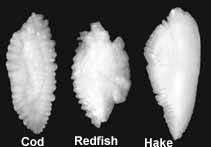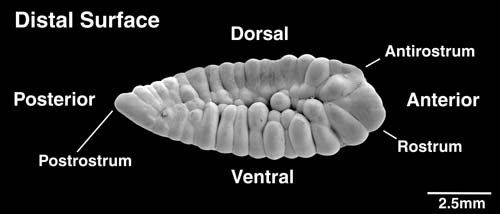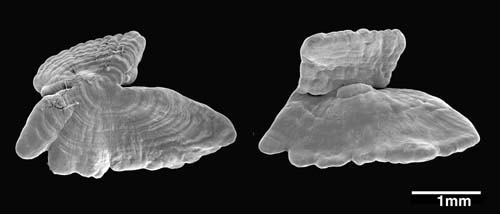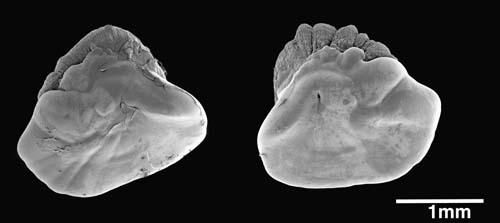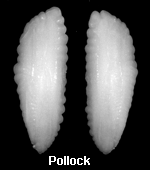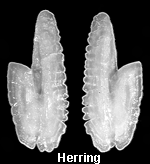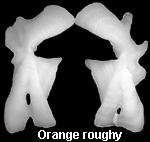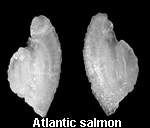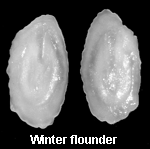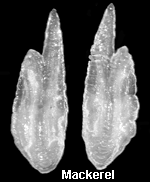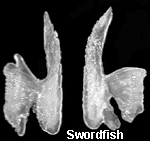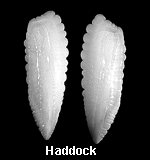Otolith shape
The otolith’s distinct shape and size, characteristic to its species of fish, helps us reconstruct the species and size composition of the diet of fish predators.
Reference collections
Fish identification is aided by the fact that otoliths resist degradation better than most other tissues. They’re often the only identifiable animal remains recovered from stomachs and droppings, as well as Indian middens.
Reference collections of otoliths now exist in several locations around the world, although none claim to be comprehensive.
We’ve completed the preparation of a reference otolith collection for fishes of the northwest Atlantic. This collection includes images of 580 sagittal otolith pairs representing 288 species, as well as samples of lapilli and asteriscii from most families. We’ve digitally photographed all images using image analysis procedures. We published these images in a book in 2004.
Appearance and shape differences
Otolith appearance and shape often vary geographically within a species, although there are mixed reports concerning the potential for stock discrimination.
While otolith shape does vary among some stocks, it appears to be environmentally induced rather than genetically induced. Variations in shape are highly correlated with variations in growth rate among:
- ages
- sexes
- year classes
Therefore, otolith shape may prove to have some potential for stock discrimination when large differences in growth rate exist among the stocks.
This was the case in Icelandic cod, where otolith shape proved to be a relatively stable characteristic of spawning aggregations where growth rate also differed.
However, using otolith shape as a stock discriminator isn’t promising when growth rates are similar among groups of fish, even if the groups are widely separated geographically.
Sample images of common species
This is a portion of our otolith digital archive.
- Date modified:
